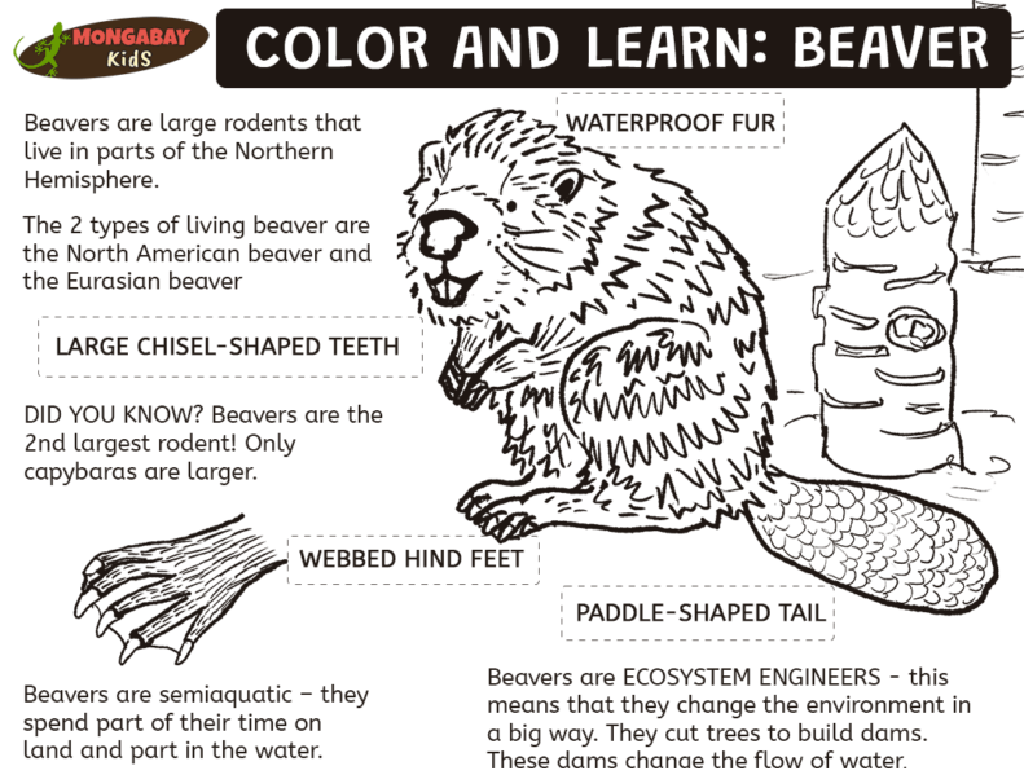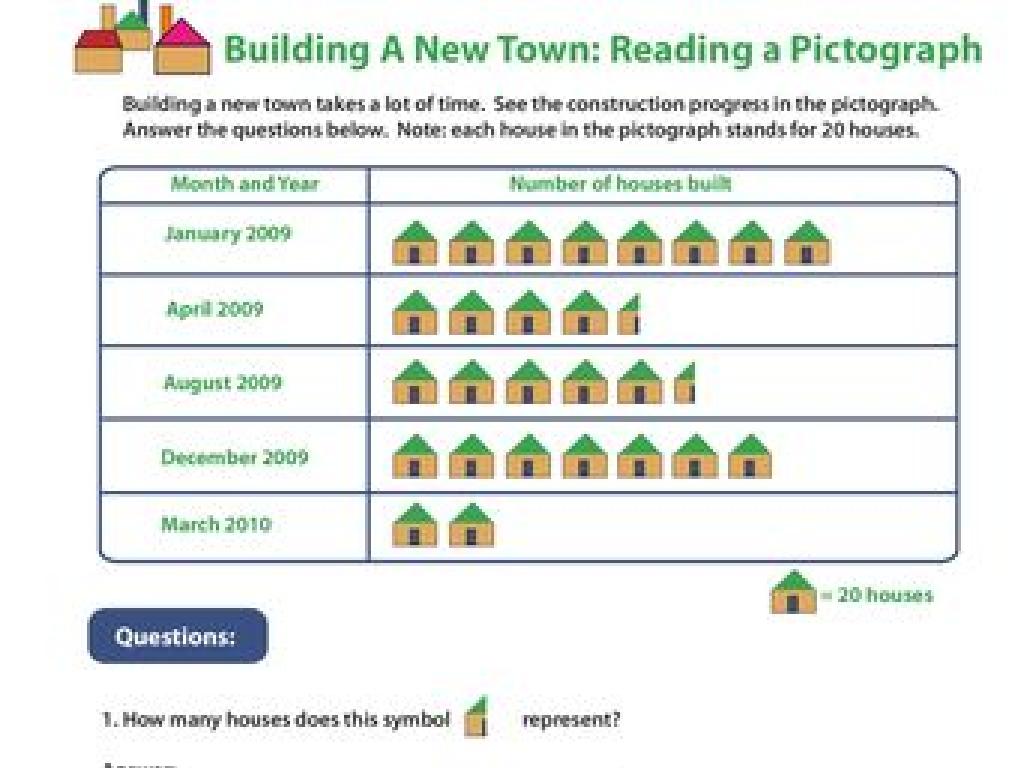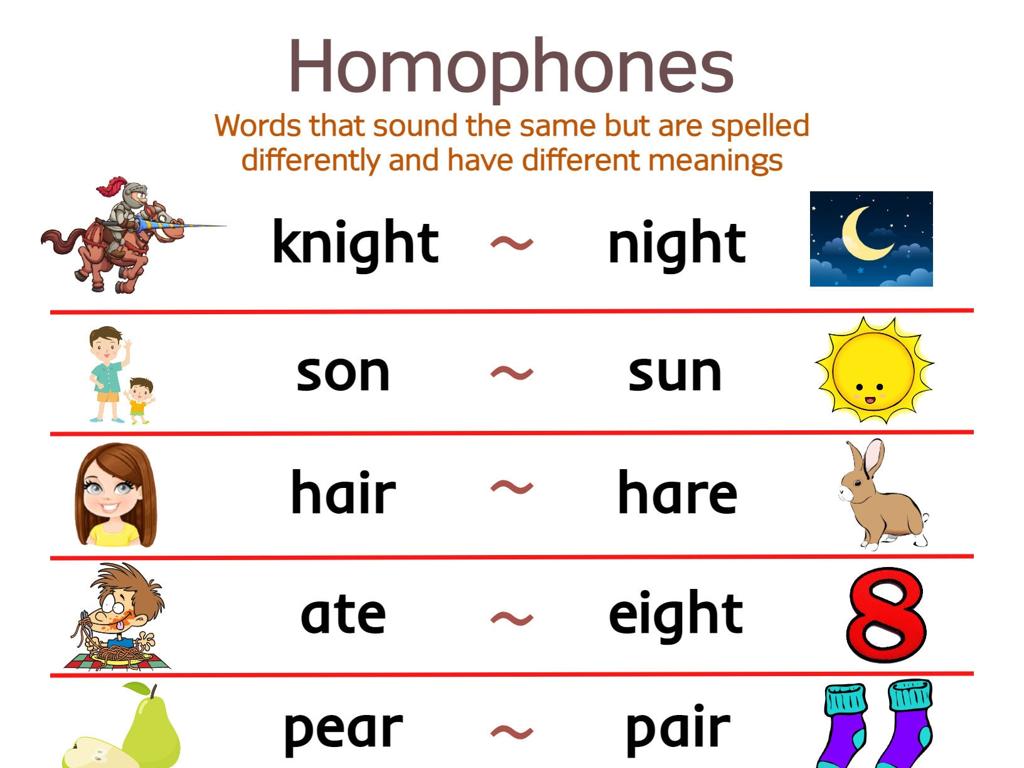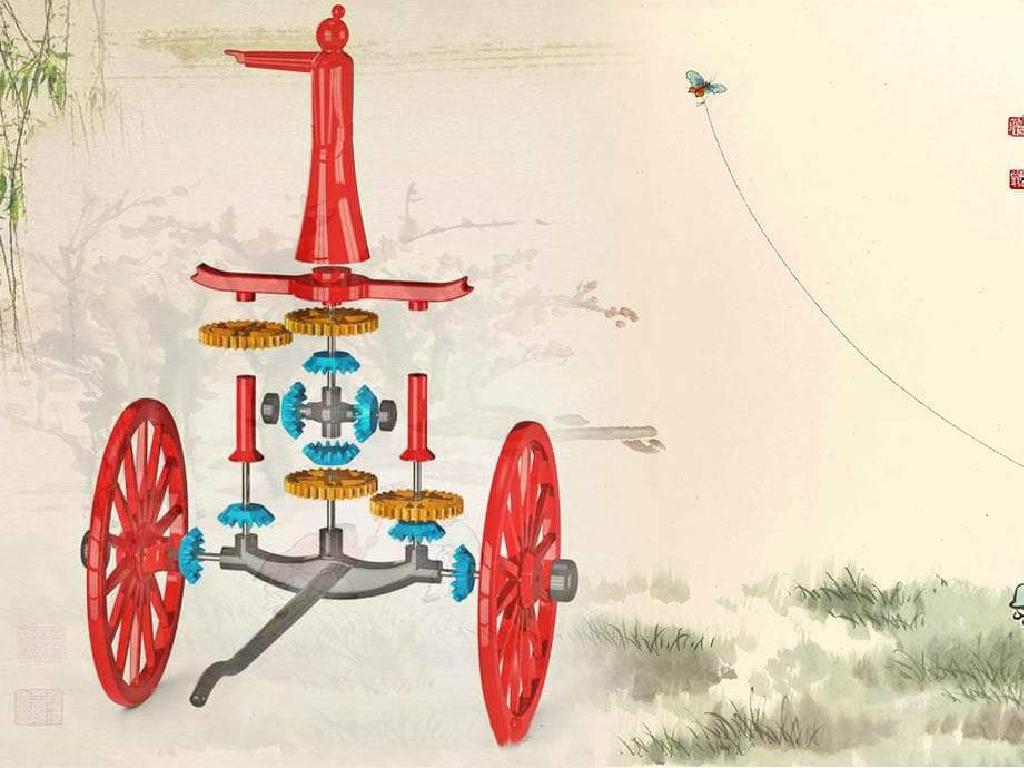Identify Verbs In The Regular Past Tense
Subject: Language arts
Grade: Third grade
Topic: Verb Tense
Please LOG IN to download the presentation. Access is available to registered users only.
View More Content
Exploring Past Tense Verbs
– What are verb tenses?
– Defining a verb
– Action words in sentences, like ‘run’, ‘talk’, ‘eat’
– Regular past tense verbs
– Verbs ending with ‘ed’, like ‘walked’, ‘jumped’, ‘laughed’
– Examples of past tense verbs
– ‘I walked to the park’, ‘She talked to her friend’
|
This slide introduces the concept of verb tenses, focusing on the past tense for regular verbs. Begin by explaining that verb tenses tell us when an action happens. Then, define a verb as an action word that shows what someone or something is doing. Next, explain that regular past tense verbs are formed by adding ‘ed’ to the base verb. Provide clear examples, using familiar and simple verbs that the students can relate to. Encourage the students to think of actions they did yesterday and try to form sentences using the past tense of the verbs.
Understanding Verbs in Past Tense
– Verbs show action or state
– Past tense verbs end in -ed
– Regular verbs add -ed to show past action
– They tell us what happened before now
– Examples: walked, jumped, laughed
– ‘I walk’ becomes ‘I walked’ yesterday
|
This slide introduces the concept of verbs and focuses on their use in the past tense. Begin by explaining that verbs are words that describe actions or states of being. Emphasize that when we talk about something that has already happened, we use the past tense form of the verb, which often ends in -ed for regular verbs. Provide examples and encourage students to think of actions they did yesterday or earlier in the week and how they would describe those actions using past tense verbs. This will help them understand how to identify and use regular past tense verbs in sentences.
Past Tense Verbs
– Past tense verbs show completed actions
– Regular verbs end with ‘ed’
– Verbs like ‘jump’ change to ‘jumped’
– Example: ‘walk’ becomes ‘walked’
– ‘Smile’ changes to ‘smiled’, showing it happened before
– Practice identifying past tense verbs
|
This slide introduces the concept of past tense verbs to third-grade students. Emphasize that past tense verbs are used to talk about actions that are already done. Most regular past tense verbs in English end with ‘ed’. Provide clear examples, such as ‘walk’ changing to ‘walked’ to illustrate the concept. Encourage students to think of verbs they use every day and how they would change those verbs to the past tense. Plan an activity where students can practice converting present tense verbs to past tense and use them in sentences to ensure they grasp the concept.
Regular Past Tense Verbs
– Making verbs past tense with ‘ed’
– Just add ‘d’ to verbs ending in ‘e’
– Example: love -> loved
– When we remember someone fondly from yesterday, we say we ‘loved’.
– Example: dance -> danced
– If we enjoyed moving to music yesterday, we ‘danced’.
|
This slide introduces the concept of regular past tense verbs to third-grade students. Emphasize the rule of adding ‘ed’ to the base form of regular verbs to indicate an action that has already happened. For verbs that already end with an ‘e’, explain that they only need an additional ‘d’. Provide clear examples with the verbs ‘love’ and ‘dance’ to illustrate the rules. Encourage students to think of other verbs and apply the rules to convert them into the past tense. You can also have them write sentences using the past tense verbs they come up with to reinforce the concept.
Spelling Rules for Past Tense Verbs
– Consonant + ‘y’: change ‘y’ to ‘i’ and add ‘ed’
– Example: ‘carry’ becomes ‘carried’
– Vowel + ‘y’: just add ‘ed’
– Example: ‘play’ becomes ‘played’
|
This slide focuses on teaching third graders the spelling rules for converting present tense verbs into the past tense. Emphasize the difference between verbs ending in a consonant followed by ‘y’ and those ending in a vowel followed by ‘y’. Use examples like ‘carry’ and ‘play’ to illustrate the rules. Have students practice by providing a list of verbs and asking them to convert them into the past tense. Encourage them to explain the rule they used for each conversion. This will help solidify their understanding of regular past tense verb formation and improve their spelling skills.
Let’s Practice: Past Tense Verbs
– Change verbs to past tense
– Verbs: jump, paint, cry, study
– jumped, painted, cried, studied
– Remember spelling rules
– Add ‘ed’ to most verbs, watch out for exceptions!
– Write your answers down
– Share your answers in class!
|
This slide is for a class activity where students will apply their knowledge of converting present tense verbs to the past tense. Remind them of the spelling rules, such as adding ‘ed’ to the end of regular verbs. However, also remind them to be mindful of verbs that require doubling the last consonant or changing ‘y’ to ‘i’ before adding ‘ed’. Have students write their answers on a piece of paper and be prepared to discuss their answers in the next class. This exercise will reinforce their understanding of regular past tense verb formation and give them practice in identifying and using these verbs correctly.
Spotting Past Tense Verbs
– What are past tense verbs?
– Verbs that tell us about actions that happened before now.
– Actions already completed
– If something happened yesterday, last week, or even a minute ago, it’s past tense.
– Look for ‘ed’ endings
– Most regular verbs end with ‘ed’ to show the action is finished, like ‘jumped’ or ‘helped’.
– Practice with sentences
– We’ll read sentences together and find the past tense verbs.
|
This slide introduces the concept of past tense verbs to third-grade students. Begin by explaining that verbs can tell us when an action happens – past, present, or future. Focus on actions that are already done, which are described by past tense verbs. Highlight the common ‘ed’ ending found in regular verbs and provide examples. Encourage students to think of actions they did yesterday or earlier in the day and how they would describe those actions using verbs. Use simple sentences and have students identify the past tense verbs. This will help them understand how to recognize and use past tense verbs in their writing and speaking.
Class Activity: Verb Hunt
– Circle past tense verbs in the story
– Pair up and discuss verb tenses
– Discuss how verbs change from present to past
– Share findings with the class
– Understand regular past tense verbs
– Verbs often end in ‘ed’ like ‘jumped’ or ‘played’
|
This activity is designed to help students recognize and understand regular past tense verbs through a fun and interactive ‘Verb Hunt’. Provide a short story to the students and ask them to circle all the verbs that are in the past tense. Encourage them to work in pairs to foster collaboration and discussion about why certain verbs are used in the past tense, focusing on the pattern of adding ‘ed’ to the base form of regular verbs. After the activity, have a sharing session where each pair presents some of their findings to the class. This will reinforce their learning and help them articulate the grammar rules. As a teacher, be prepared to guide them through the activity, clarify doubts, and ensure that each student is engaged and participating.
Mastering Past Tense Verbs
– Congratulations on learning past tense verbs!
– Practice is key to perfection
– The more you practice, the better you’ll get
– Spot past tense verbs in your books
– Look for verbs that show actions already done
– Keep up the great work!
|
This slide is meant to congratulate the students on their hard work learning about past tense verbs and to encourage them to continue practicing. Emphasize the importance of practice in mastering verb tenses. Encourage them to be detectives in their everyday reading, looking for verbs that indicate actions that have already happened. This will help reinforce their understanding and recognition of past tense verbs in various contexts. Celebrate their achievements so far and motivate them to keep learning and growing their language skills.






